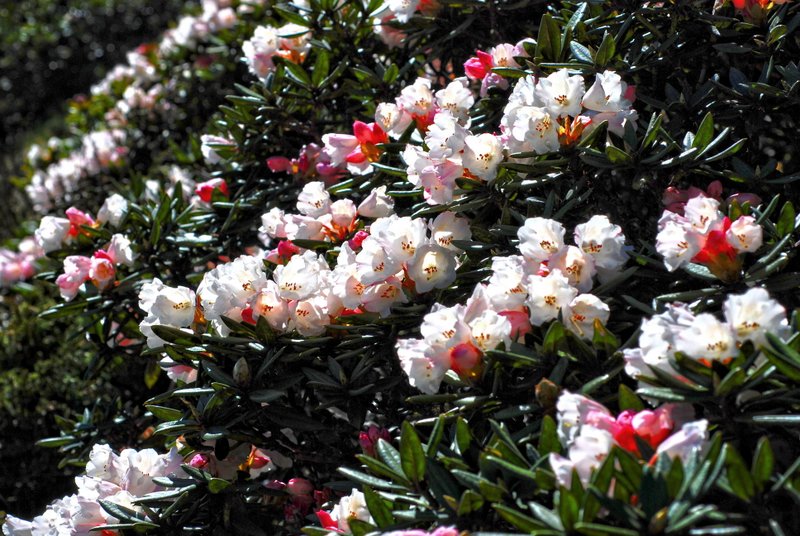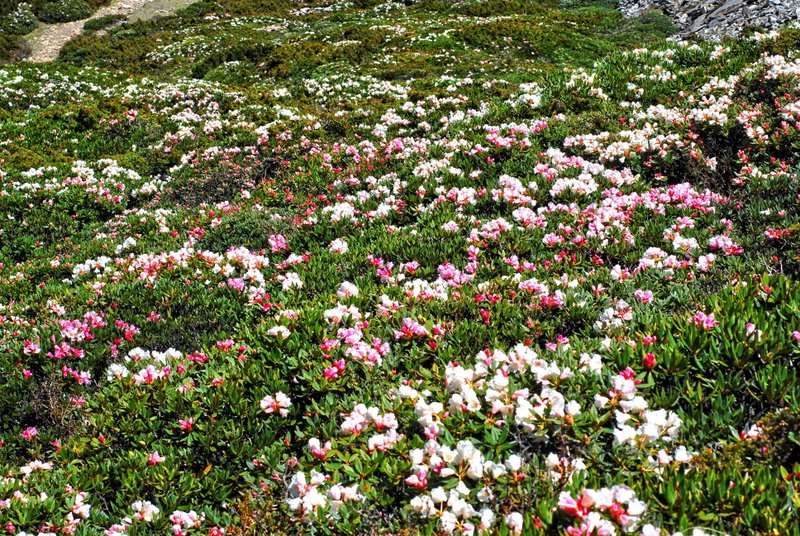While Tung flowers spread out as far as the eye can see in the low-altitude mountains of Taiwan every April and May, in mountains 3,000 meters high or more, “Rhododendron pseudochrysanthum,” a kind of azalea flowers, also compete against their flora counterparts to be the most beautiful ones. This year, in the second half of May, Rhododendron pseudochrysanthum are expected to amaze visitors with their beauty.

Rhododendron pseudochrysanthum is native to Taiwan and prospers in mild, if not cold, environments. Its phylogenetic species are found in the high mountains of Yunan, China and the Himalayas. In Taiwan, the flowers grow in mid to high-altitude mountains. Starting from the end of March in mid-altitude mountains, until early June in high-altitude mountains, Rhododendron pseudochrysanthum continues to bloom. Especially in the Snow Mountain, seas of Rhododendron pseudochrysanthum grow into full blossom during the second half of May, although the flowering period may slightly differ every year.
High-mountain ecosystems are based in extreme weather conditions. Due to climate change, high-mountain plants are faced with even more challenges these days. To gather evidence of how climate change influences the local ecosystems, the Shei-Pa National Park Administration conducted a research that lasted several years. Research results show that Rhododendron pseudochrysanthum are much more affected by warm weather in lower-altitude areas. This indicates that high-altitude Rhododendron pseudochrysanthum may better adjust themselves to global warming than their low-altitude counterparts.
The administration also studied the factors resulting in a lean or blooming year for Rhododendron pseudochrysanthum, from a single branch, an entire plant to a whole settlement. In short, whether Rhododendron pseudochrysanthum blooms or not is decided a year before, and the flowers always pop up on different parts of the plant by year. This is because flowering consumes much more energy than simply growing. Because conditions are challenging, and sunshine is relatively less in the national park, this trait of the Rhododendron pseudochrysanthum in Shei-Pa is especially salient.
According to the Administration, the Rhododendron pseudochrysanthum of Mount Jade is expected to bloom much more than previous years. Interested members of the public are advised to apply for entrance permits in advance for the ecological zones of Shei-Pa. They are also advised to visit Shei-Pa on weekdays or non-holidays. People who are unfit for mountaineering may go to Hehuan Mountain instead, where alpine azalea flowers are many. Visitors please kindly pay attention to their own safety and keep warm.
